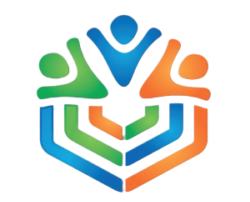

How Risk and Fate Shape Our Decisions Today
1. Introduction: Understanding How Risk and Fate Influence Human Decision-Making
Every day, humans face countless choices, from simple decisions like what to eat for breakfast to complex ones such as career changes or financial investments. Central to these choices are two powerful forces: risk and fate. While risk involves situations where outcomes are uncertain but can be analyzed and managed, fate pertains to the unpredictable, often perceived as beyond our control.
Psychologically, our brains are wired to assess risk through neurological pathways involving the prefrontal cortex and limbic system, which process both logical calculations and emotional responses. This dual processing explains why some individuals are more risk-averse while others seek thrill. Meanwhile, the concept of fate influences decision-making by invoking beliefs about destiny, luck, or divine intervention, shaping how we interpret the outcomes of our choices.
Contents
- Theoretical Foundations: Risk, Fate, and Human Behavior
- Risk vs. Fate: Distinguishing Factors and Interplay
- Modern Contexts: Decision-Making in a Complex World
- Case Study: “Drop the Boss” – An Illustration of Risk and Fate in Gaming
- Psychological Effects of Risk and Fate on Decision-Making
- Non-Obvious Perspectives: Cultural and Ethical Dimensions
- Strategies for Making Informed Decisions Amidst Uncertainty
- Conclusion: Embracing the Complexity of Risk and Fate in Our Lives
2. Theoretical Foundations: Risk, Fate, and Human Behavior
a. Classical theories of decision-making under uncertainty (e.g., Expected Utility Theory)
Expected Utility Theory, developed in the mid-20th century, posits that individuals make decisions to maximize their expected satisfaction or utility. For example, when choosing between a guaranteed $100 or a 50% chance to win $200, rational decision-makers calculate the expected values (EV): EV of the gamble is 0.5 x $200 = $100, matching the certain $100. This framework assumes humans are rational actors, weighing outcomes based on quantifiable probabilities.
b. Modern insights: Prospect Theory and behavioral biases
However, real-world decisions often deviate from classical models. Prospect Theory, introduced by Kahneman and Tversky, explains that individuals tend to overweight small probabilities and underweight large ones, leading to risk-seeking or risk-averse behaviors depending on context. For instance, many people buy lottery tickets despite low odds, driven by the thrill of potential big wins, illustrating how perception skews objective probability assessments.
c. The concept of fate: determinism, free will, and cultural influences
Fate encompasses beliefs about whether outcomes are predetermined or shaped by individual agency. In some cultures, destiny is viewed as a fixed force, reducing perceived control over life’s course. Conversely, Western philosophies often emphasize free will, encouraging personal responsibility. These beliefs influence how individuals interpret uncertainties—seeing them as challenges to conquer or as part of an inevitable cosmic plan.
3. Risk vs. Fate: Distinguishing Factors and Interplay
a. How risk is quantifiable and manageable versus fate as unpredictable
Risk involves scenarios where probabilities can be estimated based on data—like calculating the odds of winning in a game or the likelihood of a stock market fluctuation. Such scenarios allow individuals to employ strategies to mitigate or accept risks. Fate, on the other hand, is inherently unpredictable, often perceived as random or beyond human comprehension, such as the sudden turn of events in life that seem driven by luck or divine will.
b. Examples of perceived control over outcomes
Consider a trader who uses technical analysis to inform decisions—believing they can manage risk through research. Conversely, in a personal relationship, outcomes may seem governed by fate, with individuals attributing success or failure to luck or destiny rather than controllable factors. These perceptions influence whether people act cautiously or take bold risks.
c. The influence of narrative and beliefs on how we interpret risk and fate
Narratives shape our understanding of risk and fate. For instance, stories emphasizing luck—such as winning a jackpot—may foster reckless risk-taking, while tales of perseverance highlight personal agency. Beliefs about fate can either foster complacency or motivate proactive behavior, depending on whether individuals see outcomes as predetermined or malleable.
4. Modern Contexts: Decision-Making in a Complex World
a. Financial investments and market volatility
Investors constantly navigate risk through diversification and analysis. Market volatility exemplifies unpredictable fates—unexpected crashes or booms—requiring resilience and adaptive strategies. Understanding probabilistic models helps investors make informed choices, but emotional biases like herd mentality can distort risk assessments.
b. Career choices and the role of luck and skill
Choosing a career involves evaluating skills, market demand, and sometimes luck. For example, securing a high-paying job might depend on networking or timing, elements akin to fate. Recognizing the interplay between effort and chance encourages more conscious, informed decisions.
c. Personal relationships and social risks
Relationships are fraught with uncertainties—rejection, compatibility, or unforeseen circumstances. Individuals often weigh perceived risks against potential rewards, influenced by cultural beliefs about destiny or personal agency, affecting their openness to vulnerability.
5. Case Study: “Drop the Boss” – An Illustration of Risk and Fate in Gaming
a. Overview of the game mechanics linking to risk (e.g., multipliers from the K-Hole black hole)
“Drop the Boss” is a modern online slot game that exemplifies how risk and fate intertwine. The game mechanics involve activating multipliers via a virtual black hole (“K-Hole”), where players can win from modest to massive multipliers—introducing a layer of risk management and chance. The unpredictability of when and how much the multiplier will increase mirrors real-life gambling and decision-making under uncertainty.
b. The element of chance: how random multipliers influence outcomes
The game’s outcome heavily depends on chance—the random appearance of multipliers. Players may strategize or simply rely on luck, but ultimately, the results are governed by stochastic processes. This highlights the role of perception: some see it as controlled risk, others as pure fate.
c. Physical comedy and ragdoll physics as a metaphor for unpredictability
The game’s visual elements, such as ragdoll physics and exaggerated animations, serve as metaphors for life’s unpredictability—where outcomes can be chaotic, humorous, or disastrous, often beyond our control. This aligns with the concept that, despite our best efforts, many outcomes are shaped by randomness.
d. The significance of visual cues (e.g., the golden light in the Oval Office window) as symbols of perceived safety or danger
In the game, visual cues like the glowing light in the Oval Office window symbolize perceived safety or risk. Such cues influence player psychology—just as in real life, where symbols and narratives shape our perception of danger or security, guiding our decisions accordingly.
6. Psychological Effects of Risk and Fate on Decision-Making
a. The gambler’s fallacy and the illusion of control
The gambler’s fallacy—the belief that past outcomes influence future ones—leads players to think they can predict or control random events. For example, after a series of losses, a gambler might believe a win is “due,” despite independence of events, illustrating how perceptions of control distort rational judgment.
b. Risk tolerance and individual differences
Research indicates significant variability in risk tolerance. Factors include personality traits, cultural background, and past experiences. For instance, high sensation-seekers might engage more readily in risky behaviors, while others prefer safety and certainty, reflecting how perceptions of fate and control influence choices.
c. How beliefs about fate can lead to reckless or cautious behaviors
Believing in fate can either foster complacency—”whatever happens is meant to be”—or motivate caution—”fate rewards those who are prepared.” These differing beliefs impact behaviors, from reckless gambling to meticulous planning, demonstrating the profound influence of cultural narratives.
7. Non-Obvious Perspectives: Cultural and Ethical Dimensions
a. Cultural narratives that emphasize destiny versus personal agency
Cultures vary widely in their framing of risk and fate. For example, East Asian societies often emphasize harmony and destiny, fostering acceptance of fate, whereas Western cultures valorize individual agency and control. These narratives influence how people approach risk, risk-taking, and resilience.
b. Ethical considerations: risk-taking in societal and personal contexts
Ethically, risk-taking involves weighing potential harm against benefits. In societal contexts, reckless behaviors—such as unsafe driving—raise questions about responsibility. Understanding the interplay of risk and fate informs ethical discussions about individual freedom versus societal safety.
c. The impact of media and entertainment, like “Drop the Boss,” in shaping perceptions of risk and fate
Media influences how we perceive risk—often glamorizing luck and chance. Games like Drop The Boss UK exemplify modern entertainment that dramatizes risk and unpredictability. While entertaining, such media can shape real-life attitudes toward risk and fate, sometimes fostering reckless optimism or fatalism.
8. Strategies for Making Informed Decisions Amidst Uncertainty
a. Risk assessment tools and probabilistic thinking
Utilizing statistical tools and understanding probabilities enable more rational decision-making. For example, developing mental models of odds, such as expected value calculations, helps in evaluating options objectively, reducing reliance on intuition alone.
b. Embracing uncertainty: developing resilience and adaptability
Accepting that some outcomes are inherently unpredictable fosters resilience. Adaptive strategies—like diversifying investments or maintaining flexible plans—allow individuals to navigate changing circumstances effectively.
c. Recognizing and mitigating cognitive biases
Being aware of biases such as overconfidence, anchoring, or the gambler’s fallacy helps improve decision quality. Techniques like seeking diverse perspectives or systematically analyzing risks can mitigate these biases.
9. Conclusion: Embracing the Complexity of Risk and Fate in Our Lives
Understanding the nuanced roles of risk and fate enhances our ability to make informed, adaptive decisions. Recognizing that some factors are within our control while others are governed by randomness encourages a balanced mindset—one that neither succumbs to reckless gamble nor paralysis by fear.
“In life, as in games like Drop the Boss, embracing uncertainty with awareness and resilience transforms risk from a threat into an opportunity for growth.”
Modern examples, including entertainment and gaming, serve as mirrors reflecting the complex dance between fate and risk—reminding us that our decisions are shaped by both perception and reality. Cultivating awareness of these forces empowers us to navigate life’s uncertainties with confidence and wisdom.

